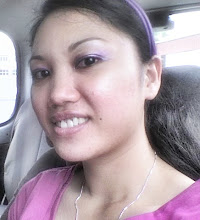- advantages
- sufficient frequency range to support multiple channel, which allows for much greater throughput.
- lower error rates. because the inner conductor is in a Faraday shield, noise immunity is improved, and coax has a lower error rates and therefore slightly better performance than twisted pair.
- greater spacing between amplifiers coax's cable shielding reduces noise and crosstalk, which means amplifiers can be spaced farther apart than with twisted pair.
- more expensive to install compare to twisted pair cable.
- the thicker the cable, the more difficult to work with.
- advantages
- system performance
- greatly increased bandwidth and capacity
- lower signal attenuation (loss)
- immunity to electrical noise
- immune to noise (electromagnetic interference and radio frequency interference)
- less restrictive in harsh environments
- overall system economy
- fiber optic component are expensive
- fiber optic transmitters and receivers are still relatively expensive compared to electrical interfaces
- the lack of standardization in the industry has also limited the acceptance of fiber optics.
- advantages
- using telephone wires are their relative low cost and their availability
- handled a data flow of up to approximately one megabit per second (Mbps) over several hundred feet
- small local area network with a limited number of users, twisted pair is an ideal choice because it is both inexpensive and easy to install.
- susceptibility to signal distortion errors and the relatively low transmission rates they provide over long distances.


Thank you, this was very helpful x
ReplyDeleteThis is the good differentiation i have ever come across for the coaxial cable. Really liked it. Thanks a ton.
ReplyDeleteDigital Coaxial cable
Thank you for this posting. Very helpful writing. For more Info you can click here:- Coaxial Cables suppliers
ReplyDeletethis is damn useful....thanxxxxxxxx
ReplyDeleteThank you.......
ReplyDeleteThis is really an excellent Blog ; and very informative information there – I've read. Really very useful all of them. I like them a lot. Hope – we'll get more this type of information in future days.
ReplyDeleteFibre Optic Cable Australia
Optic fibers are used to connect servers and users in a variety of network settings and also help in increasing the accuracy and speed of data transmission.
ReplyDeleteGabriel@Maximumtechnology
You have copied information verbatim from some other websites without citing the reference. Remember to give even the devil his due.
ReplyDeleteWe have more than 3,000 square-meter facility area and over 110 experienced workers.Our company has an annual production capacity of 10 million terminations of fiber optic patch cord, 30 million fiber optic adaptors, and 300 thousand fiber optic attenuators.aminite
ReplyDeleteA fiber-optic system is similar to the copper wire system that fiber-optics is replacing. The difference is that fiber-optics use light pulses to transmit information down fiber lines instead of using electronic pulses to transmit information down copper lines. Looking at the components in a fiber-optic chain will give a better understanding of how the system works in conjunction with wire based systems.At one end of the system is a transmitter. This is the place of origin for information coming on to fiber-optic lines. The transmitter accepts coded electronic pulse information coming from copper wire. It then processes and translates that information into equivalently coded light pulses.Think of a Fiber Cable in terms of very long cardboard roll (from the inside roll of paper towel) that is coated with a mirror on the inside.If you shine a flashlight in one end you can see light come out at the far end - even if it's been bent around a corner.
ReplyDelete
ReplyDeleteGood Information wire mesh suppliers thanks for a sharing a information.
wire mesh suppliers
thank you so much for sharing such details about fiber optics
ReplyDeleteNice blog Thanks for sharing....
ReplyDeleteOTDR
Splicing machine
BUY OTDR
NOYES OTDR
FIBER OPTIC CABLE